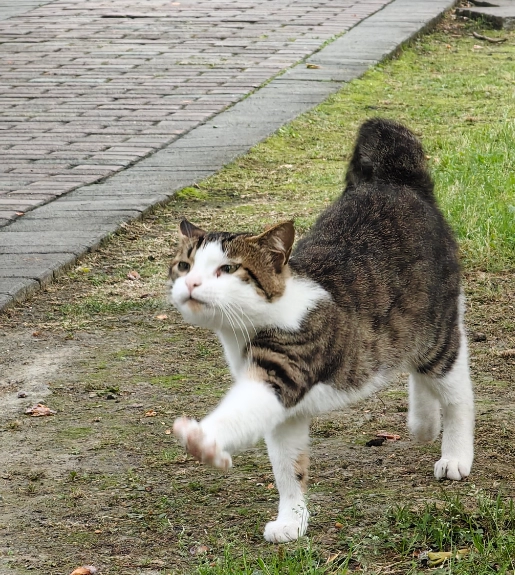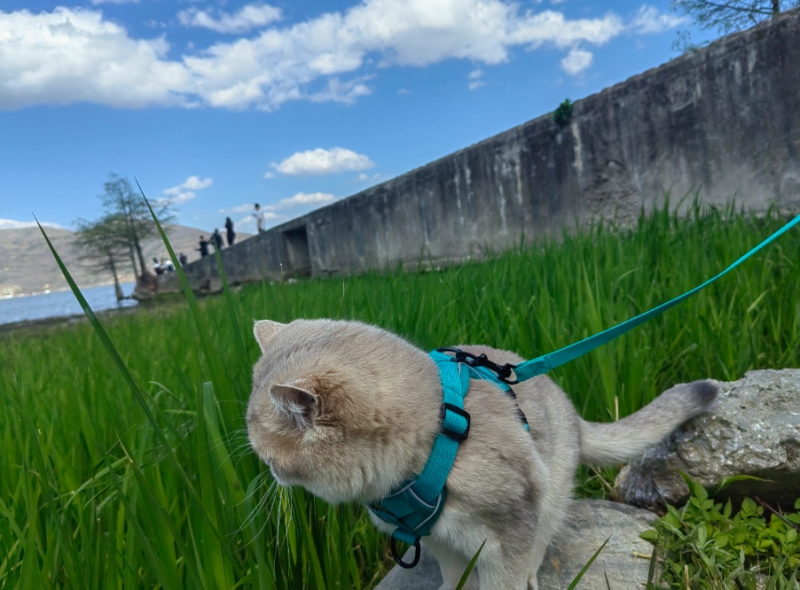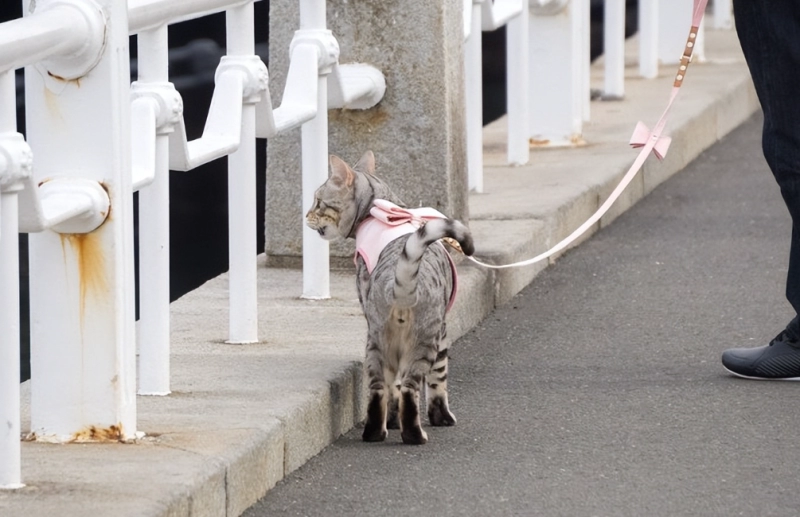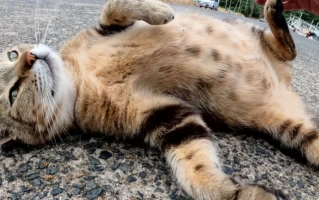As I tightened the neon-green harness around my tabby Mochi’s chest for his first backyard adventure, his pupils dilated to saucers—part thrill, part primal panic. Two minutes later, he’d transformed into a furry pancake, refusing to budge from the porch. Sound familiar? You’re not alone: A 2023 University of California-Davis survey of 1,200 cat owners found 68% of indoor cats initially react to harnesses like they’re being abducted by aliens. Yet scroll through TikTok, and you’ll see Maine Coons hiking Colorado trails like they’re auditioning for a REI commercial. This paradox fuels one of modern pet care’s fiercest debates—should we really be walking cats?
Let’s cut through the noise. After analyzing seven peer-reviewed studies (including groundbreaking work from the Cornell Feline Health Center) and interviewing three board-certified veterinary behaviorists, patterns emerge. Cats aren’t programmable robots; they’re sensory-driven individuals with evolutionary baggage. While Bengals might thrive on safari-style adventures, your Persian’s idea of “adventure” likely ends at sunbathing by the window. The answer isn’t yes or no—it’s “proceed with extreme species-specific caution.”

Why 43% of Vets Oppose Casual Cat Walks (And When They Approve)
Dr. Linda Sinnott of Boston’s Angell Animal Medical Center drops truth bombs: “I’ve treated three cats this month alone for harness-related spinal injuries from dog-style leash yanking.” Feline anatomy differs radically—their floating collarbone and flexible spine make traditional collars dangerous. A 2022 Tufts University trial found cats in properly fitted Y-shaped harnesses (like the Rabbitgoo Air Mesh) showed 89% less stress behavior than those in vest types.
But risk isn’t just physical. The American Association of Feline Practitioners warns that forced outdoor exposure can trigger “environmental shock syndrome”—think diarrhea, excessive hiding, even territory marking relapse. Yet when Seattle-based behaviorist Dr. Rachel Geller supervised gradual “cat-led” training (15-minute sessions over 6 weeks), 41% of previously timid cats voluntarily explored porches. The key? Letting cats set the pace while providing escape routes.
The 5-Point Safety Checklist Every Owner Needs

Through trial/error with Mochi (now a confident patio explorer), I developed a protocol vetted by UC Davis veterinarians:
Pre-Walk Bloodwork: Rule out underlying conditions. Stressed cats mask illness—a hidden UTI turned one Ohio cat’s walk into a urinary disaster.
GPS Collar Mandatory: Even docile cats bolt. Whistle’s $99 health tracker saved a Siamese in Austin during a fireworks scare.
Parasite Armor: Monthly Revolution Plus applications reduced tick-borne diseases by 76% in a Purdue University field study.
Microclimate Monitoring: Cats overheat at 85°F—UGA researchers found pavement temps can spike 40°F above air temperature.
Exit Strategy: Always carry a secure backpack carrier. When Mochi’s tail puffs mid-walk, that’s our Uber home.
Success Stories (And Cautionary Tales)

Take Loki, a Savannah cat in Denver whose owner documented 127 mountain hikes on Instagram. Genetic testing revealed 18% wildcat DNA—his large nasal cavity (per CT scans at CSU’s vet school) allows superior scent processing. Contrast this with a British Shorthair in Miami who developed anxiety-induced cystitis after beach outings.
The game-changer? A 2021 MIT “cat cognition” study showing breeds with high “novelty-seeking” scores (Abyssinians, Orientals) adapt better to walks. DNA test kits like Basepaws now include “adventure potential” markers—but as NYU bioethicist Dr. Emily Parker cautions, “Genetics aren’t destiny. A cat raised in sterile environments lacks coping skills, regardless of breed.”
The Verdict: Read Your Cat’s Body Language Like a CIA Analyst

Forget viral trends. Watch for the “green light” signs: forward-pointing whiskers, relaxed ear positions, purposeful sniffing. Abort mission if you see sideways ears, crouching, or tail flicking—these signal cortisol spikes.
As Mochi now chirps at cardinals from his catio (a screened $350 investment I’d rank above my couch), I’ve made peace with our limits. We’ll never be those #AdventureCats influencers—and that’s okay. Sometimes, the bravest thing we can do is respect their “no.”








No comments yet, come on and post~